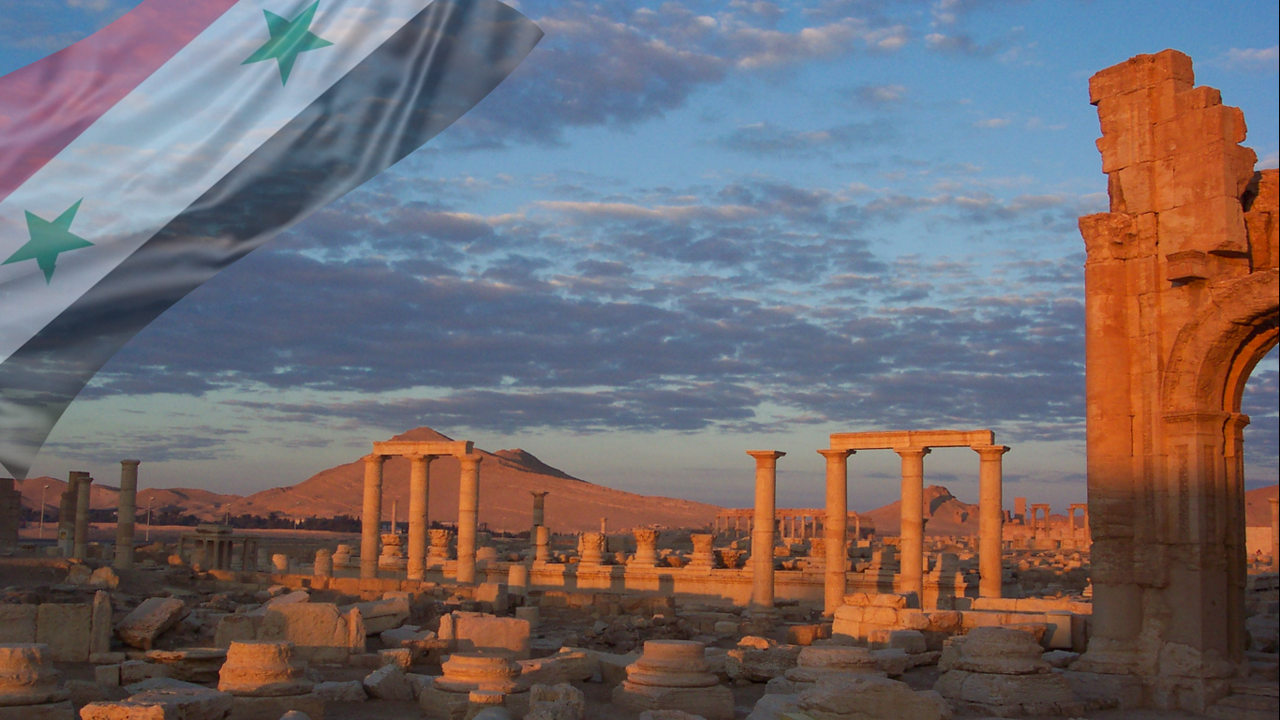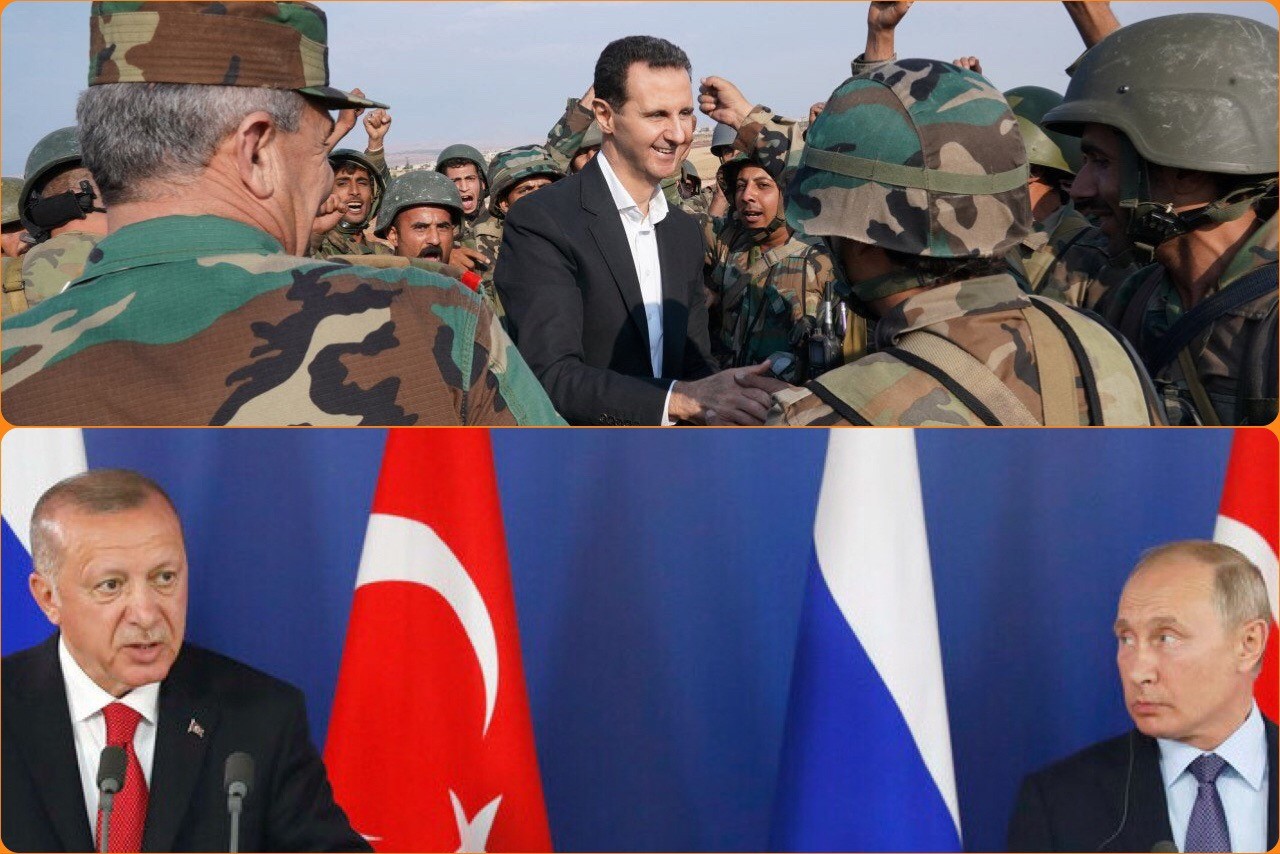Though last week we started a bigger introduction to the matter of Yemen, and we planned during this week to continue our study with more than interesting developments our planes were crossed over. On 5 March in Moscow a meeting took place in Moscow between Turkish President Erdoğan and his Russian counterpart Putin, which resulted a ceasefire agreement about the matter of Idlib. Thus putting an end, or at least a temporal halt to the hostilities in the last bulwark of the terrorists in Syria. With this the operation of the Syrian Army started in November 2019 with the aim to put an end to the atrocities of the radical groups came out an end, though the operation brought significant gains to the Syrian state. And this is an awaited stopping point of the escalation started in late February, when Turkey decided to intervene directly helping its protégées in Idlib, and which was threatening the region with overspill and an all-out war.
It is true that this meeting was in the air for some time, but all previous propositions were either turned down by Russia, or Moscow refrained from joining broader meetings. After all this summit in Moscow resulting the new ceasefire agreement took place on the very same day, when a quadrilateral meeting was scheduled in Istanbul with France and Germany about Idlib, though Moscow signaled that Putin had other engagements that day. It seems at the end the Russian President could spare some time, but that was not all given. Therefore we anticipated a result might come later, which was all the more reasonable as the Russian rhetoric was intensifying against Ankara in the last week, or so, even amidst the most alarming developments.
Therefore we were still preparing for Yemen this week, where the fall of the city of Ḥazm, capital of al-Ğawf province, the last in the hands of the Saudi Coalition along the Saudi border, came as only the latest development in the changing realities. And that has now far reaching prospects in the Yemeni folder. Therefore we have to ask just one more week of patience from our followers.
However, the new ceasefire agreement on Idlib, which is technically not even new, only an amendment of the Sochi agreement, caused wide ranging speculations, guesses and even accusations, mostly in Syria, which not only allows us to draw a brief evaluation over the recent clash between Damascus and Ankara, but even necessitates some clarification.
And since during the week even Amaraia Center took some assessment of the situation, this week it is more of our aim to point our certain key aspects of this phase of the conflict now coming to an end, than to site a big pool of reports.
What we leave behind
Objectively looking the operation in Idlib was an outstanding success for the Syrian state militarily, politically, tactically and above all else, morally. The operation, which first started on November 2019 came to many halts with temporal ceasefires, mostly brokered by Russia, only to finally shift gear in January and lead to a series of victories. The first major achievement was the liberation of Ma‘rat an-Nu‘mān on 28 January. Than in little more than a week, by 7 February the Syrian Army was in Sarāqib, the second biggest city of Idlib Province. By 17 February all eastern suburbs of Aleppo came under the control of the Syrian Army, thus completing the liberation of Syria’s second biggest city and industrial hearth, which will soon have positive results of the Syrian economy.
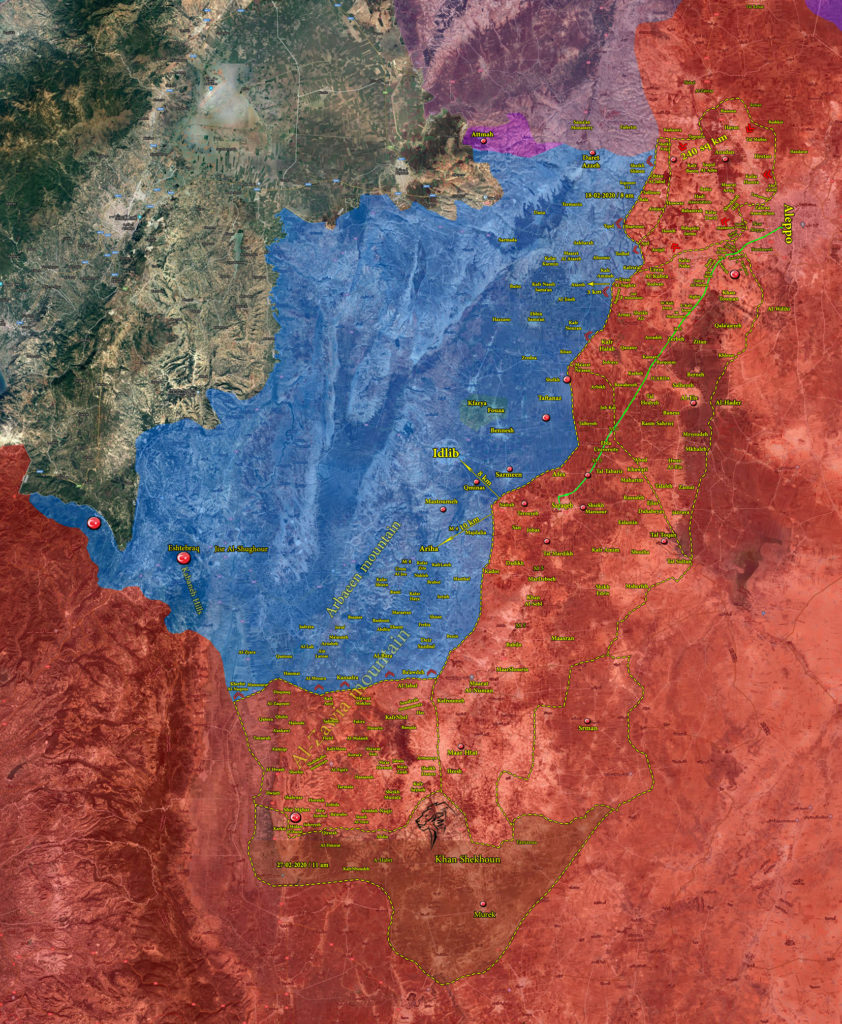
Erdoğan first tried to prevent this rapid collapse of the forces it supports in Syria and sent in ever more reinforcements, mostly setting up new – and thus illegal – observatory posts, which in times served as safe houses for the retreating radical factions, including those listed internationally as terrorist organizations. That attempt bringing no result lead Ankara to resort to threats and finally an ultimatum that the Syrian forces have to retreat behind the limits of the de-escalation zone stipulated in Sochi by the end of February, otherwise the Turkish army will intervene directly and will do just that. The Syrian leadership completely and openly disregarded this threat and the continued operations putting Ankara to a choice. Either it acts immediately, or soon there will be nothing to build on, as the moral of the radical and supported groups was shrinking faster than the areas under their control. Erdoğan chose to act, and stepping over his own deadline launched a counterattack on 20 February, which first was a devastating defeat. The increased pressure and the use of high number of suicide bombers in later days lead to temporal and partial retreat from the most crucial an-Nayrab and Sarāqib, but in the meantime large parts in southern Idlib were liberated and by the 1 March the Syrian Army was fully back in Sarāqib. The rapid deployment of the Russian Military Police around the city meant that no further Turkish attack is possible against this strategic juncture of the M4 and M5 highways, therefore the most crucial part of the Turkish action came beyond reach. In these busy days of the battle for Sarāqib the Syrian Army gained three significant military victories. In the broadest spectrum it devastated the standing of the Turkish military, as the second biggest and second most potent army of the NATO proved unable to overcome the army of a much smaller country, which is in war for eight years and has to reserve a significant amount of its troops to other fronts.
Secondly, and for the first time, the Russian Air Force intervened directly and pounded the Turkish forces, which were unable to respond. The deployment of Stinger missiles and the continuous harassment of the Russian military airport in Ḥamīmīm only strengthened the Russian resolve, but brought no success at all. The Turkish forces could only shoot down age old Syrian helicopters, and reportedly Syrian jets, but the hastily brought in Stinger missiles achieved nothing against the Russians. The result is that while its own protégées melted away against the Syrian strikes and huge frictions arose upon this, the Syrian-Russian cooperation only grew stronger and Russia was now a more committed partner than before. In other words, the only result was that now Moscow was ever less willing to compromise.
Thirdly, the Syrian Army against all criticism showed incredible technical skill, far beyond what is accredited to it. The biggest surprise came on 27 February when in one single strike 34 Turkish soldiers died. That, however, is far beyond the sheer number, because these were Turkish special forces, the elite of the Turkish troops fighting in Idlib, and the supposed vanguard of the operations. The fact that the Syrian army could monitor its movement and even apprehend a video from within the compound at the time of the strike prove high technical skills. Along with this success the capability of destroy 3 Leopard tanks, and the big number of highly developed Turkish military drones, which were used at the last phase of the confrontation as an ultimate winning card, signaled that Ankara cannot increase the pressure technically, only by sending in bigger and bigger numbers. Which was clear that would only create a quagmire with no escape from it, since directly fighting Russia is not possible in the long run.
During this battle, or this series of battles the Syrian Army surely had high losses. Numbers are still not officially announced, however, by all realistic estimates these were way beneath what Ankara anticipated. Has the case been otherwise the Turkish Command would have not resolved to a high number of false claims on strikes and bombardments, almost all documented to be false.
In short, responding to the steady encroachment of the terrorists from the so called de-escalation zones and their attacks the Syrian Army launched a massive operation, which liberated half of Idlib, finally secured Aleppo and stood ground even against Turkey. That will have a detrimental effect on the terrorist factions, as many refuse to be deployed into Libya – Turkey’s first plane to get rid of them – and a high number was allegedly arrested by the Turks themselves, as they were trying to flee to Turkey at the time of battle in Sarāqib.
The ceasefire
It was doubtful for long whether this meeting will take place or not, but on 5 March yet another ceasefire deal was cut between Putin and Erdoğan in Moscow. The real result will only show in time, as in its very first day reports said that the terrorists exploited the calm to launch yet another offensive. Indeed, hopes are not high now in Syria, as all previous agreements were always broken by the forces fighting to overthrow the Syrian government all the way back to 2012, and such steps were always used by the terrorists to regroup, rearm and prepare for an even bigger offensive. Also, since all these deals were cut while the Syrian Army was advancing, such as the circumstances now, it was always viewed as last minute attempts to save the terrorist groups from extinction, only to come back in time stronger. But so far the ceasefire is holding and Damascus’s line on 6 March was that it is to be respected. In light of these circumstances the key aspects of the deal should be seen, before all other major deliberations.
First of all it should be understood that technically this is not a new deal, but a supplementary for the one struck in Sochi. Therefore nothing extremely new came in it, though in this light it is curious why the negotiations went on for 6 hours. The main idea is that the new line of control is where the forces were standing on 5 March, along which there should be permanent ceasefire. Along the M4 highway there shall be a new de-escalation zone, a demilitarized area in 6 kilometers depth to the north and to the south. The M4 highway shall be opened after a 7 days period for civilian traffic, or at least for non-military transport. That shall be safeguarded by joint Russian-Turkish patrols. North of that zone the Russian forces will monitor the disarmament of the radical groups, at least their deprivation from heavy armaments. There is nothing new in it, that was the basis of the idea in Sochi, stressing the opening of the M4 and the M5 highways, only nothing came of it. Now the M5 is protected by the Syrian Army, which liberated it, and the M4 is guaranteed by the Russians. Since this section of the zone will be guarded by partially Russian forces, it is expected to hold more, yet what will happen in other sections, is more fragile.
With this objectively the Syrian state achieved all its objectives in the beginning of the operation, with the exception of regaining all the M4 highway, now reached partially and indirectly, and the liberation of Idlib city. Though it is standing some 8 kilometers from it. On the other hand all what Ankara achieved that its observation posts, many now deep within Syrian control, can stay for the time being. The new deal stipulates that these shall be evacuated, though no definite timetable was announced. Which is sharply different what Erdoğan was claiming before that the Syrian Army will be pushed beyond these posts. The only benefit of it that at least Turkey can claim that its is not kicked out of Idlib.
In short, especially seeing how much Ankara invested in this and that the threat was to push back the Syrian Army completely, and after the loss of a high number of Turkish troops, this equals to nothing less than a sugarcoated surrender by Turkey.
That is especially true if we consider some points, which were not specifically stated, but should be understood from the key points. One of them is the matter of the cities of Ğisr aš-Šuġūr and Arīḥā the last significant points under militant control along the M4 highway. Though in theory these cities are not liberated, they fall along the newly created demilitarized safe passages, safeguarded by joint Turkish-Russian patrols. In such conditions, the last major cities in Idlib Province are to be evacuated from the terrorist factions. Even if they are not liberated, which was the original aim of the Syrian Army they cannot be fortified. The same is true to Idlib, to which the safe passage zones are extremely close now. Meaning that if the ceasefire sticks these major cities along with the provincial capital will be somewhat vacated from the terrorist groups, and if the agreement fails they will be easier to be liberated later on. The other major point is, what is not new either, that the factions listed as terrorist groups must be fought against. Turkey never fulfilled this point stipulated in Sochi, but now in significant territories this operation will be monitored by the Russian patrols. This and the lack of possibly to fortify the bigger towns will likely lead to even more erosion of the radical elements in the region.
Civilians, moderates or terrorists? Who is being protected by Turkey?
In regard to the whole dilemma of Idlib many times the very logical question is raised: what is Turkey doing in Syria? That is just not that simple question as one might think, since indeed there was a huge wave of refugees from Syria – and many other countries – to Turkey, and the result is that millions of these people live in there now. Regardless of how much Turkey is responsible for that in the first place with its blatant intervention into Syrian internal affairs that is a huge burden. Especially that many of these people are proven to be members of terrorist groups, and Turkey has indeed saw terrorist attacks on its own soil. The matter, however, is highly exploited by Ankara, both against Europe and against Syria.
Therefore it is in the upmost objective of Turkey to prevent even more people moving in. The less public side of this matter is that Turkey is less afraid of civilian migrant, but much more of the very radical groups it trained and supported during the years in a quest against Damascus. That will surely not achieve its original objective, but it is a pressing matter nonetheless. So Turkey used these proxies to move into Syrian territories and use the taken land as a bargaining chip against Damascus at the final resolution, so the groups it supported would have a share in power. Meaning not all investment would be lost and a high number of these refugees will be pushed back to Syria, only to be used as a power and support basis for these extended arms of Turkey.
This process has to be wrapped, however, and that is why Turkey claims to protect civilians. In this line the Turkish government vents the rhetoric of the most radical elements of the fighting groups in Syria, which is needed also as a bargaining tool against Europe. Thought as we could witness in the last week or so, this trick is losing its charm.
Among the many examples, only two should stand here what sort of groups are being supported by Ankara today, and how much the little remaining civilian population in Idlib is unsettled to see the return of the Syrian state.
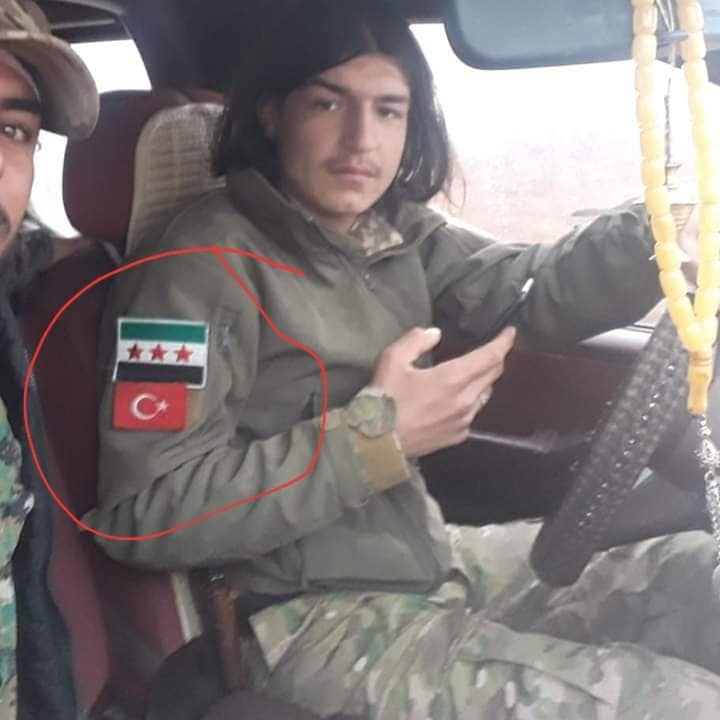
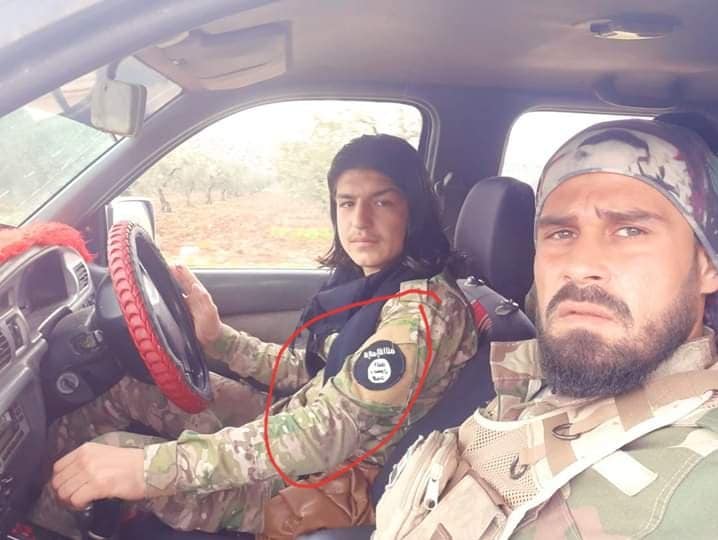
The individual in the picture is a Syrian citizen, calls himself Sāmir, and is a formed member of several armed groups including Dā‘iš. This alone, keeping in mind the heavy presence of Turkish military and intelligence on the ground proved the weight of the claim that Turkey fights terrorism in Idlib.
The video here was made in the town of Ūram al-Kubra in the recently liberated areas on 16 February, when a Syrian soldier from from the same village saw his family again after years. That is the general reception in most liberated areas, a picture not surprisingly missing from all Western narratives.
Betting and losing on all horses
It is viewed in some assessments that Erdoğan was only bluffing and when called on it by Putin he folded. Which is pretty much true, but this assessment is based on the supposition that there was never any real danger of real war as conditions would not allow it and Turkey could not face Russia alone. Here, however, we have to remind ourselves that politics is a human genre and as such, at the end, it is done by human, therefore fallible creatures. Meaning that evaluations can be drawn, but no matter how unlikely, at the end war can never be excluded. And indeed Erdoğan played the full spectrum of the diplomatic landscape, only to lose on each and every gamble.
First he betted on the supposition that since Russia is just as interested in the common projects with Turkey, it will not risk a direct confrontation. So if the Turkish army intervenes directly the Russian forces will at least be hesitant, meaning that at least major gains can be achieved before the next deal. This was a clear failure, which showed in the first offensive.
The second gamble was the threat to repair the ties with Washington. In such way ditch the S-400 project, buy Patriot batteries and apply them directly in Idlib. Signaling that Turkey might bring in the Americans to the fight. Russia never bought this threat. That was the biggest gamble, and though the Americans promised a lot and exploited the crisis, it never delivered any support. Probably not a surprise that right after the ceasefire deal Erdoğan announced that the S-400 project is back and criticized the Americans for not delivering arms.
The next venture was to call a NATO emergency meeting, which was conveyed on 28 February, so right after the 34 Turkish soldiers got killed. Erdoğan asked for specific help from the NATO and to impose a common no-fly zone above Idlib. This could have allowed the Turkish forces to move freely and subside the threat of the Syrian and Russian air forces. The NATO expressed solidarity, but promised no tangible help and practically refused the idea of a no-fly zone. In plain words the message was that NATO is not about risk confrontation with Russia for Idlib.
The last trick was no convey a quadrilateral meeting with France, Germany and Russia in Istanbul. This was not a promising mission, but at least could have been a face saving standing to have a ceasefire in Istanbul under international plenum. But after Russia refused this Erdoğan has no alternative than to go to Moscow and accept any deal offered. Probably it was not a wise decision to put pressure on the European partners by opening the gates for the refugees trying to go to Europe, since this way Erdoğan only infuriated the last possible partners.
More than anything, the battle for Idlib showed how desperately Turkey is isolated in the Syrian folder and if it wants to reach anything tangible, it has to deal with Russia. Hoping from American to European support, trying every possible cards Ankara showed that it has no supporters here. And in this regard the lack of any Arab side supporting the Turkish position, even by Qatar is a huge blow and the showing dead end of the Turkish policies in the Arab world. Especially that this war was met with regular Israeli strikes, almost always in the most desperate hours. Which might have been an Israeli trick, but gave the image that Turkey is fighting a destructive war in cooperation with Israel against an Arab state.
Support and moral
It is an important question how much support Erdoğan could gather internally for his quest. Especially that the same quest only brought in millions of refugees, whom the Turkish society is growing tired now. When the first bigger group of Turkish soldiers fell an open letter was written by intellectuals and leading members of the civil society to stop the escalation and halt operations in Idlib. Since it was clear that it serves no purpose. Something even more dramatic happened in the Turkish Parliament, however, on 04 March, when Turkish MPs were literally fighting against further military activity in Idlib. While AKP was loathing the opposition as treacherous, it shows that pressure in growing within the Turkish political circles.
While at the same time most Syrians criticize their leadership for not continuing the operations. Not regardless of the losses, but exactly on the basis that after such losses nothing short of complete liberation is acceptable.
It was a very telling scene to see that on 5 March, meaning just the day of the announced Putin-Erdoğan meeting Syrian President Baššār al-Asad gave an interview to the Russia 24 channel. Both the timing and the channel are clear symbolic messages. In this the Syrian President was showing complete calm and restraint, expressing that he was not worried at all that “Russia would sell Syria”. Even bigger slap to the Turkish position was, when al-Asad expressed that Syria has not problem with the Turkish people. Quite to contrary, according to his words, there are mixed families, mixed groups and a long common history. Meaning the Syrian Army is not fighting Turkey, only Erdoğan is sending Turkish soldiers to die in Syria for noting and for his own selfish reasons. That is giving a message that he is more concerned about the Turkish soldiers than Erdoğan. Which might be a rhetoric trick, but in one hand opens the door for a rapprochement with Ankara, while on the other it shows strength. After all, during the time of this crisis it was not the Syrian side, which was threatening and angry, but the Turkish one, yet at the end the aims Damascus were fulfilled and not those of Ankara.
Though indeed the Syrian army can use the time now to regroup and consolidate the gains, the difference in resolve is showing more than anything, who won the battle for Idlib. While Turkey only proved that it is extremely isolated, Syria just got support from the Arab League.

